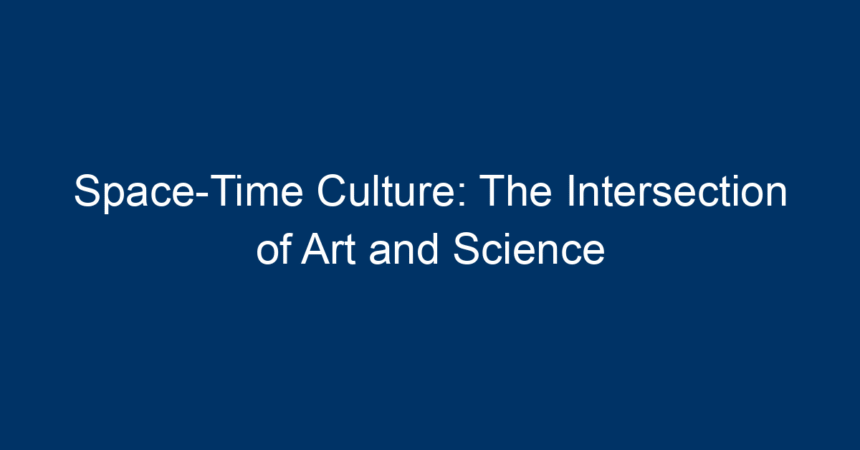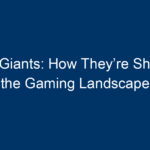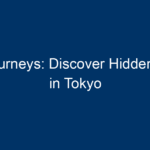In an age where scientific discovery and artistic expression are becoming increasingly interwoven, the concept of "space-time culture" emerges as a compelling focal point. This term refers to the shared experiences of time and space that shape our understanding of the world, marrying the intricate realms of art and science. As we delve into space-time culture, we will explore how these two seemingly disparate fields come together to enrich our cultural landscape, drive innovation, and shape our perception of reality.
The Essence of Space-Time Culture
Space-time culture embodies the idea that our experiences are not just influenced by the temporal dimension (time) and the spatial dimension (space) but also by how art and science interact within these frameworks. This intersection creates a unique cultural environment that fosters creativity and innovation.
Understanding Space and Time
To grasp the concept of space-time culture, we must first explore its components—space and time.
-
Space refers to the physical universe in which all events occur and all matter exists. It informs how we navigate our environment, interact with objects, and relate to one another.
- Time, on the other hand, represents the dimension in which events occur in a sequential manner. It influences everything from our daily routines to the development and evolution of societies.
In blending these dimensions, artists and scientists alike seek to understand their place within the universe, exploring perspectives that challenge traditional narratives.
The Scientific Foundation of Space-Time Culture
The Role of Physics
Modern physics has revolutionized our understanding of space and time through theories such as Einstein’s theory of relativity. This groundbreaking theory changed the way we perceive the universe, suggesting that time is not constant and can be affected by speed and gravity. This scientific foundation informs and inspires artists who aim to express complex concepts through visual representation, music, and even literature.
Interdisciplinary Collaboration
In recent years, there has been a notable shift towards collaboration between artists and scientists. Institutions like the ArtScience Museum in Singapore and the Institute for the Future in Palo Alto are examples of spaces where these disciplines intersect. They host exhibitions and programs that encourage a dialogue between artists and scientists, promoting a richer understanding of our universe through creativity.
The Artistic Perspective
Infusing Science with Creativity
Art serves as a bridge between scientific ideas and public interpretation. For instance, many contemporary artists use the principles of physics to create works that challenge the viewer’s perception of space and time. Artists like Olafur Eliasson and Anish Kapoor use light, reflection, and materials to explore how we experience the world around us, presenting a tangible understanding of abstract concepts.
Space-Time as a Theme in Art
Many contemporary artworks reference ideas from physics, invoking the notion of space-time. Films like Interstellar or installations such as The Obliteration Room by Yayoi Kusama encourage audiences to reflect on their own perceptions of reality and existence. These artistic expressions serve not only as a form of entertainment but also as a medium for philosophical exploration.
Technological Innovations in Space-Time Culture
Digital Art and Virtual Reality
Advancements in technology have further blurred the lines between art and science. The rise of digital art and virtual reality allows artists to create immersive experiences that interact with space and time in ways that traditional mediums cannot. Using tools like augmented reality, creators can transform public spaces into interactive canvases, inviting audiences to engage in their own unique explorations of space-time culture.
Science Communication
In an era where misinformation can spread rapidly, art plays a crucial role in science communication. Creative mediums can simplify complex scientific ideas, making them more accessible to the general public. Infographics, illustrations, and animated videos help clarify challenging concepts, bridging the gap between scientists and laypeople effectively.
Cultural Reflections and Responses
Space-Time in Popular Culture
The influence of space-time culture extends into popular media, whether it be films, television shows, or literature. Productions like Doctor Who and books like The Time Traveler’s Wife challenge conventional notions of time and incorporate scientific theories, prompting audiences to ponder the implications of time travel and parallel universes.
Festivals and Global Collaborations
Annual events like the Burning Man Festival or the Venice Biennale celebrate the fusion of science and art, emphasizing community engagement and shared experiences. These festivals allow creators to brainstorm, collaborate, and present new ideas that encapsulate the essence of space-time culture, highlighting diverse perspectives on a global stage.
The Importance of Space-Time Culture in Society
As societal challenges grow more complex, the need for integrative thinking becomes evident. Space-time culture encourages us to adopt a holistic view, where art and science complement each other in addressing critical issues.
Education and Innovation
By fostering interdisciplinary education that emphasizes the connections between art and science, we can inspire future generations of thinkers, creators, and problem-solvers. Such education can cultivate a sense of curiosity, encouraging students to explore various fields and challenge conventional boundaries.
Addressing Global Issues
In an interconnected world grappling with climate change, inequality, and technological disruption, the space-time culture encourages collaborative solutions. By harnessing creative approaches to scientific challenges, we can develop innovative solutions that resonate emotionally and intellectually across diverse communities.
Conclusion: Embracing a Shared Future
As we navigate the complexities of the 21st century, the intersection of art and science within space-time culture offers a roadmap for understanding our realities. By appreciating the synergy between these disciplines, we can create a vibrant culture that embraces curiosity, exploration, and empathy.
Actionable Insights
-
Engage with Art and Science: Attend exhibitions, lectures, or workshops that highlight the intersection of culture, art, and science to deepen your understanding.
-
Foster Interdisciplinary Work: Advocate for collaborations within educational institutions to incorporate both art and science in curricula, promoting creativity alongside scientific inquiry.
-
Participate in Cultural Events: Engage in local festivals or community projects that celebrate space-time culture, offering a platform for diverse voices and ideas.
- Support Science Communication: Utilize and share artistic resources that make scientific ideas accessible, fostering informed and engaged communities.
By exploring the dimensions of space-time culture, we embrace a richer, more nuanced understanding of our existence, one that empowers both artists and scientists to illuminate the intricacies of the universe we inhabit.




